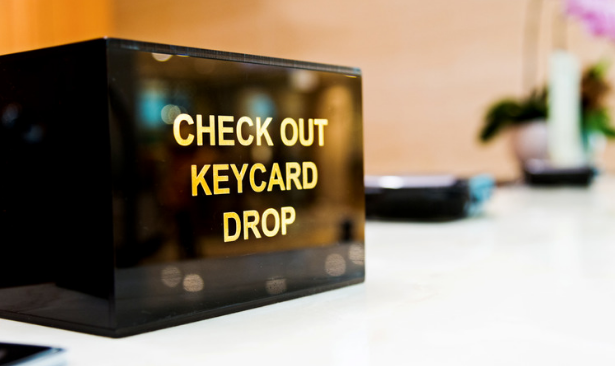Table of Contents
One of the most common mistakes beginner online store owners make is not paying much attention to their store’s web design. An excellent e-commerce store does more than just house your inventory and presents them to your target customers. A great web design is in itself a marketing opportunity that, when executed right, can help you get more sales and online success.
Famous graphic designer and filmmaker Saul Bass put it best when he said, “Design is thinking made visual.” Proficient knowledge in color psychology, element placement, and marketing copy is necessary to create a website that converts. All these are unified by an adequate understanding of who your customers are and what they want. Failure to do so will result in sales lost, no matter how good your product is.
According to marketing research, an unattractive website is enough to discourage 38 percent of site visitors from further interaction. Around 48 percent of users judge a site’s credibility by its design alone. Like every part of your marketing effort, designing an e-commerce store that sells is all about curating a pleasant customer experience, so design with your customers in mind. Here are key tips that will help you create a winning online store.
9 Tips for Creating an Outstanding Online Store Web Design
1. Less Is More
Just because you have complete control over your website doesn’t mean you should spam it with all adverts imaginable. Yes, it can be tempting to place as many flashing ads and pop-up elements on your site to promote your latest sales or products, but you also run the risk of overwhelming your customers. Too many elements used at the same time can be more distracting than helpful. In web design, simple is better. According to science, the more familiar the design is, the more engaging it is for your audience. Create a more appealing website with these tips:
- Know your audience and the kind of websites they frequent the most.
- Draft a site containing all the familiar elements from your research.
- Put things where your audience expects them to be.
- Keep copy and colors to a minimum.
- Make sure expectations on elements like pricing, site speed, and overall aesthetics are met, but keep it original.
2. Prioritize Branding
 If you’re in a market where competition is fierce, having an on-brand website is a great way to catch your audience’s attention. Your site should communicate what you stand for and what makes you a cut above the rest. Keep in mind that the goal of your site is to convince people to buy from you, which means asking them to hand over sensitive personal and financial information. Understandably, people will be wary of buying from a shady-looking website. Having an on-brand website that tells your story and what you aim for as a brand will lend your site a unique identity that it needs to establish a firm position in the marketplace.
If you’re in a market where competition is fierce, having an on-brand website is a great way to catch your audience’s attention. Your site should communicate what you stand for and what makes you a cut above the rest. Keep in mind that the goal of your site is to convince people to buy from you, which means asking them to hand over sensitive personal and financial information. Understandably, people will be wary of buying from a shady-looking website. Having an on-brand website that tells your story and what you aim for as a brand will lend your site a unique identity that it needs to establish a firm position in the marketplace.
3. Understand Color Psychology
 Different colors evoke different kinds of emotions. For example, red inspires excitement and passion and is great for call-to-action (CTA) buttons. Meanwhile, blue is commonly associated with competence and trust, making it a heavily used color among tech, medical, and legal websites. How you use colors in your design can make or break your site. That is why learning when to use and avoid these color elements must be one of the first few things you should consider when designing your overall color palette.
Different colors evoke different kinds of emotions. For example, red inspires excitement and passion and is great for call-to-action (CTA) buttons. Meanwhile, blue is commonly associated with competence and trust, making it a heavily used color among tech, medical, and legal websites. How you use colors in your design can make or break your site. That is why learning when to use and avoid these color elements must be one of the first few things you should consider when designing your overall color palette.
4. Follow What Works
Chances are, your audience is not new to internet use and have visited hundreds of other websites before they landed on yours. Most of these websites follow the same design rules, given that familiarity breeds likability. That said, your site visitors will expect to find certain buttons at specific locations within your website. Any deviation from this expectation can cause slight irritation or frustration.
If you want to design a positive user experience, it’s essential to consider these expectations first before making radical design decisions. As a rule of thumb, try to mimic what already works for many other sites similar to yours. Otherwise, see to it that your navigation menu is clear as day, a search bar is easy to locate, and your CTA buttons are apparent. Don’t spend so much time reinventing the wheel. Instead, focus on how you can incorporate what already works into your branding.
5. Only Use High-Resolution Images
 Website shoppers love good visuals. If you’re looking for an easy way to populate your design space without making it look cluttered, use excellent, high-quality imagery. Invest in good photos, especially for showcasing your products. Customers don’t have the luxury of inspecting your products first-hand, so giving them a proper view of what you offer through high-resolution images helps them make an informed decision.
Website shoppers love good visuals. If you’re looking for an easy way to populate your design space without making it look cluttered, use excellent, high-quality imagery. Invest in good photos, especially for showcasing your products. Customers don’t have the luxury of inspecting your products first-hand, so giving them a proper view of what you offer through high-resolution images helps them make an informed decision.
6. Write for the Eyes
Long copy is old news. Your website content should be informative but brief because most customers no longer read paragraphs of product descriptions. Instead, they look for key terms that tell them essential information about the product. When writing copy for your e-commerce site, apply the following tips:
- Keep your sentences short.
- Use bullet points.
- Add a clear call to action.
These will make your copy more scannable and easy to read. This applies not only to your website content but also to your ad copy, landing pages and blog posts. A killer sales copy drives impressions, clicks, and ultimately, sales, so don’t underestimate the power of quality content. Hire a specialist to improve your ad campaigns, curate an on-brand personality, and improve your online visibility.
7. Add Social Proof
Have you gotten a lot of great feedback from your customers? Show it off! Adding social proof will help solidify your customers’ trust in your brand and ease them into making their first or repeat purchase.
The different types of social proof include the following:
- Testimonials
- Customer reviews
- Expert reviews
- Trust icons
- Case studies
- Social media channels
- Address
- Contact information
8. Make the Checkout Process Easy
 According to Retail Dive, 39 percent of customers abandon their purchase if checkout is too hard. If you want to make more sales, you have to make it easy for people to buy from you, which means designing a breezy checkout process. Your checkout page should not contain unnecessary design elements that can confuse customers. The steps should be clear, and you should provide customers with multiple payment options to make checkout as easy as possible.
According to Retail Dive, 39 percent of customers abandon their purchase if checkout is too hard. If you want to make more sales, you have to make it easy for people to buy from you, which means designing a breezy checkout process. Your checkout page should not contain unnecessary design elements that can confuse customers. The steps should be clear, and you should provide customers with multiple payment options to make checkout as easy as possible.
9. Optimize for Different Devices
Many people buy via their mobile phones and tablet devices. In 2018, almost 40 per cent of holiday season purchases were made on an AI smartphone. If you’re starting an e-commerce site, it’s a huge mistake to design solely for one platform. If your site is only developed for desktop, it will appear small and inconvenient to navigate on a phone. To make your website more efficient, on-page SEO is the best option to improve the user experience and the usability of your website. Make your design responsive, and it will seamlessly adjust according to the device being used by your customers.
Wrapping Up
Designing a winning website that stands out in 2021 can be challenging. But now that you have the basics covered, you have a good foundation to take your eCommerce store design to the next level. Now is the time to get started!

